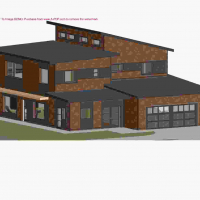Welcome! Here are the website rules, as well as some tips for using this forum.
Need to contact us? Visit https://heatinghelp.com/contact-us/.
Click here to Find a Contractor in your area.
Insulating cold and chilled water lines in dwelling - Best Practice?
Options

SENWiEco
Member Posts: 159
Good day folks,
I am wondering what best practice is for insulating chilled and cold water pipes inside a dwelling regards to protecting from condensation.
I will have both domestic cold and chilled space conditioning PEX circuits throughout the home.
I plan on using Armaflex continuous coil elastomeric rubber insulation (1/2" thickness) for the runs between fittings.
But what do you do at framing penetrations. Obviously I cannot drill out a 1-3/4" hole in 2x4 plates and studs, so what is best practice to seal at these points to prevent condensation?? Specifically worried about double plates or multi-ply studs.
Also, what is best practice around manifolds, valves, etc.? I have some Armaflex flat stock. Should I just make an air tight box around the device leaving things like valve handles accessible?
Any advise would be greatly appreciated.
(PS I know not to insulator circulator motors, zone actuators, end the like)
I am wondering what best practice is for insulating chilled and cold water pipes inside a dwelling regards to protecting from condensation.
I will have both domestic cold and chilled space conditioning PEX circuits throughout the home.
I plan on using Armaflex continuous coil elastomeric rubber insulation (1/2" thickness) for the runs between fittings.
But what do you do at framing penetrations. Obviously I cannot drill out a 1-3/4" hole in 2x4 plates and studs, so what is best practice to seal at these points to prevent condensation?? Specifically worried about double plates or multi-ply studs.
Also, what is best practice around manifolds, valves, etc.? I have some Armaflex flat stock. Should I just make an air tight box around the device leaving things like valve handles accessible?
Any advise would be greatly appreciated.
(PS I know not to insulator circulator motors, zone actuators, end the like)
Sean Wiens
0
Comments
-
Yes, I think you on the right track. Pex isn't straight so fiberglass is out. I would use armaflex, I don't think they make it thicker than 1/2". You need to glue the joints although cutting so that the ends seal with pressure and then duct tape them seems to work. The penetrations I think spray foam is about all you can do. I would build a box around the manifolds as you suggest.1
-
continuous insulation would be best, plates should not be a problem for that size hole, here is the stud spec.
Exposed metal the size of your thumb nail is enough to cause condensation issues. The entire valve and handles, etc. some manifolds are available with insulation jackets.Bob "hot rod" Rohr
trainer for Caleffi NA
Living the hydronic dream1 -
Thanks @EBEBRATT-Ed
Thanks @hot_rod - Interesting stud spec. Canada is completely different.
- Holes drilled in roof, floor or ceiling framing members shall be not larger than one-quarter the depth of the member and shall be located not less than 50 mm from the edges, unless the depth of the member is increased by the size of the hole.
- Wall studs shall not be notched, drilled or otherwise damaged so that the undamaged portion of the stud is less than two-thirds the depth of the stud if the stud is loadbearing or 40 mm if the stud is non-loadbearing, unless the weakened studs are suitably reinforced.
So to convert this to English. 2x4 studs must have 1-1/3" undrilled allowing for a 1-1/8" hole max. Could do it at locations I have a 2x6 wall through studs but not through top plates without somehow reinforcing the plates.
I do not have many through-framing routes, most is going through my open web floor trusses. Guess I will just try to seal insulation to each side of framing as best as able. May also try to drill through seam of multi-ply down to pipe penetration with say a 3/8" hole (prior to pipe insertion) and inject sealant to create air barrier at that location.
Sean Wiens0 -
What do you think about something like this for valves? Would the Velcro be air tight enough
 https://www.youtube.com/watch?v=TayZ9uJABb0 Sean Wiens0
https://www.youtube.com/watch?v=TayZ9uJABb0 Sean Wiens0
Categories
- All Categories
- 85.7K THE MAIN WALL
- 3K A-C, Heat Pumps & Refrigeration
- 51 Biomass
- 423 Carbon Monoxide Awareness
- 71 Chimneys & Flues
- 1.9K Domestic Hot Water
- 5.2K Gas Heating
- 92 Geothermal
- 149 Indoor-Air Quality
- 3.2K Oil Heating
- 59 Pipe Deterioration
- 850 Plumbing
- 5.8K Radiant Heating
- 371 Solar
- 14.5K Strictly Steam
- 3.2K Thermostats and Controls
- 51 Water Quality
- 38 Industry Classes
- 55 Job Opportunities
- 18 Recall Announcements
